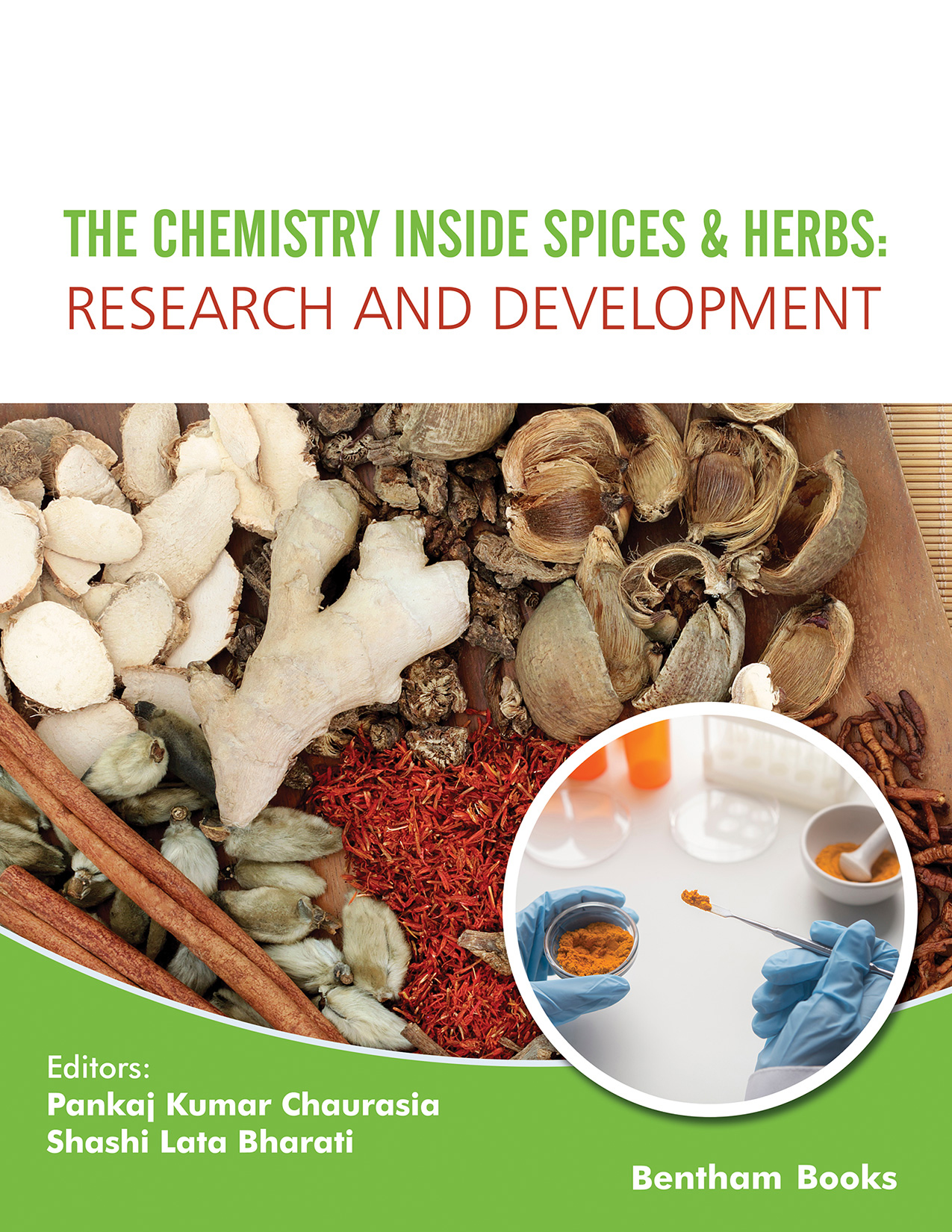Plants are the boon of nature on the earth for us in many ways. They detoxify the environments and save the lives living on this earth. Out of several advantages of plants, their different parts and/or substances are known for their noteworthy medicinal values. Spices and herbs which are involved in our daily routine life are the treasure of good health. Spices, a routine part of the kitchen, as well as herbs of our garden, are full of medicinal virtues and benefits and can be significantly used for the treatment of various disorders and diseases of humans. Spices are actually fruits, seeds, barks, roots and other parts of the plants widely used for enhancing the taste, color and quality of the foods (https://en.wikipedia.org/wiki/Spice) and are the source of various valuable chemical constituents of pharmaceutical significances while herbs are leafy green or flowering parts of the various plants with savory or aromatic properties (https://en.wikipedia.org/wiki/Herb). They are the major source of Ayurveda and other traditional culture of treatments and also have a great potential in the modern time. Spices and culinary herbs and their various chemical constituents involved in the treatment of various problems, diseases and wounds have been beautifully covered in this book.
In the present time of the serious pandemic COVID 19 period, demands of pharmaceutically valuable spices and herbs have been surprisingly enhanced all over the world because they have a substantial and valuable position as nutraceutical which doubtlessly are due to their significant healthy, nutritious and immunity boosting properties. Actually, the main objective of the construction of this book was to collect the more significant valuable researches and information on spices and herbs, which are being widely used in our daily life either in the form of taste enhancing savory materials or quality improving materials or beautiful home decoration and so on. Collection of weighty researches on biologically active pharmaceutically interesting chemical compounds and their compositions and structure activity relationships of these compounds was the second most interesting objective of this book.
This book is full of scientific knowledge on spices, herbs, associated internal chemistry and wide biological performances. It includes biochemistry and biotechnology of spices and herbs, along with the in-depth approach to natural drugs in skin diseases, Fenugreek, Basil, Terminalia chebula, Curcumin, Resveratrol in osteoarthritis, Piperine, Turmeric and Curcumin in Arthritis, Natural Medicinal Therapy, and so on.
This book consists of total ten chapters and each chapter has been written by the various learned experts of their field. Learned experts come from various countries like India, UK, and Turkey. This unique collection of ten chapters may be highly beneficial for the students of graduate and post graduate level studying in the field of life sciences, biotechnology and biochemistry, plant sciences and for researchers and scientists working research in the field of spices, herbs, compounds with biological activity, natural treatment and natural pharmacology. The book is full of updated knowledge, information and recent researches, and without any doubt, it will be very much fruitful for the readers.
Chapter 1,
titled “Drugs from Natural Sources in the Management of Skin Diseases” is written by Mandlik and Kulkarni and aims to provide detailed scientific information about the management of skin diseases by using drugs from natural sources.
Chapter 2, titled “Turmeric and Curcumin for Arthritis: Evidence for their therapeutic use” is written by Kudva et al. In this chapter, they compiled the validated observations and discussed their mode of action that confers their beneficial effects.
Chapter 3, titled “Curcumin, the principal compound of turmeric (Curcuma longa Lin) in oral health: a mini review”, is written by Lasrado et al. This article looks into the chemoprotective and immunomodulant roles of curcumin in regards to the oral diseases and proposes the importance of naturally occurring phytochemicals in general health.
Chapter 4, titled “Resveratrol in osteoarthritis: a memoir”, is written by Mathai et al. This memoir looks into the origin, structure and patho-mechanism of resveratrol on its action against osteoarthritis.
Chapter 5, titled “Piperine: An alkaloid from Piper species with a wide range of therapeutic properties”, is written by Singh, S. The present chapter accounts for an overview of therapeutic properties of piperine, the bioactive constituent of pepper. It also focuses on methods used to extract piperine from pepper along with recent approaches for the enhancement of the bioavailability of piperine.
Chapter 6, titled “Fenugreek (Trigonella foenum-graecum L.): A Palatable Spice, An Active Herb, A Promising Functional Food and Even More”, is written by Onder et al. They have comprehensively discussed the plants’ phytochemical content and biological activity.
Chapter 7 titled “Clinical Aspects of Ashwagandha”, concisely describes the various recent clinical aspects and researches on this medicinally valuable herb.
Chapter 8, titled “Phytoconstituents, Biological Properties and Health Benefits of Basil (Ocimum basilicum L.)”, is written by Urvashi et al. This chapter has covered up-to-date information on pharmacological investigations of the herb and its health-related benefits.
Chapter 9, titled “Phytochemistry and Pharmacology of Terminalia chebula: an Update”, is written by Agrawal and Kulkarni. They have given an update on the phytochemistry and pharmacology of T. chebula.
Chapter 10, titled “Role of Plants in Natural Medicinal Therapy”, is written by Mulgund and Bhat. They have discussed the potential and significance of plants for natural pharmacological care.
Pankaj Kumar Chaurasia
PG Department of Chemistry, L.S. College,
Muzaffarpur, Bihar,
India
&
Shashi Lata Bharati
Department of Chemistry, NERIST,
Nirjuli, Arunachal Pradesh,
India

